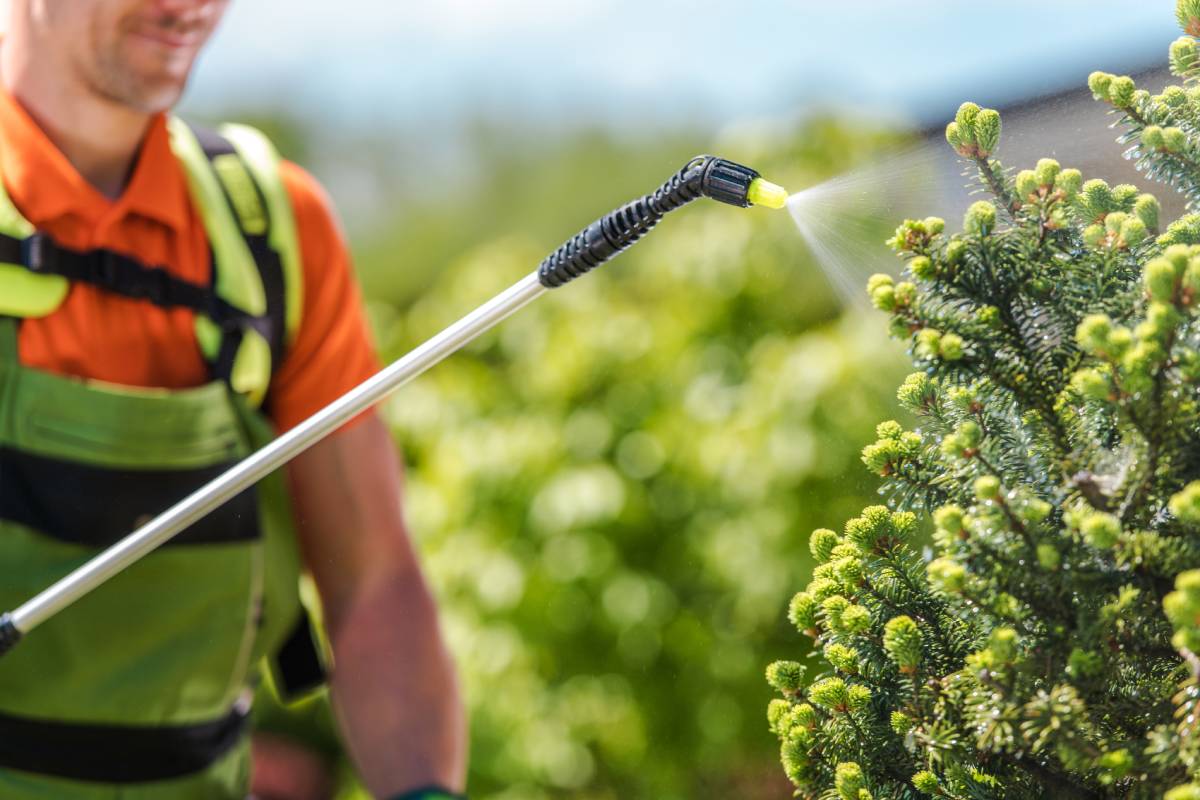Herbicides can be a convenient and effective way to tackle stubborn weeds that threaten to overrun your garden or landscape. However, while they’re excellent at getting rid of unwanted plants, improper herbicide use can harm your prized trees and shrubs — or worse, cause irreversible damage.
Understanding how to use herbicides safely, and when to call in professionals for keeping your outdoor space healthy, safe, and environmentally responsible.
Can I Use Herbicide in My Garden?
Yes — herbicides can be a useful tool for gardeners and landscapers when used correctly. These products, often containing chemicals like glyphosate, work by disrupting plant growth, effectively killing weeds that compete with your trees and shrubs for sunlight, water, and nutrients.
In Australian gardens, weeds like bindii, nutgrass, and couch can quickly take over lawns and garden beds. Herbicides can help control these invasive plants so your trees and ornamentals can thrive. However, it’s important to remember that trees are also plants, and a misdirected spray or soil contamination can easily affect them too.
Even a small amount of overspray on tree bark, roots, or foliage can cause visible damage such as browning leaves, stunted growth, and in some cases, long-term decline. The impact might not show up immediately — it could take weeks or months before the damage becomes noticeable.
If you’re unsure about using herbicides safely around your trees, it’s best to seek professional advice. Australian arborists are trained to handle chemical applications responsibly, ensuring your trees remain healthy while managing weed problems effectively.
The Dangers of Improper Tree Herbicide Use
While weedkillers are readily available in most Australian hardware stores, that doesn’t mean they’re harmless. Chemicals such as glyphosate and triclopyr are highly potent and can easily harm non-target plants if not used carefully.
Here are some common risks of herbicide misuse around trees:
- Root Absorption:
Many trees have root systems that extend far beyond their canopy. Herbicides sprayed onto nearby soil can leach down and be absorbed by roots, leading to internal poisoning of the tree. - Drift Damage:
On windy days, herbicide mist can drift and settle onto tree leaves, causing discolouration, wilting, or even death of young shoots. - Soil Contamination:
Some herbicides linger in the soil for months, affecting future plant growth and damaging beneficial soil organisms. - Health Risks to Humans and Wildlife:
Exposure to herbicides can cause skin irritation, nausea, or respiratory problems. Pets and native wildlife are also vulnerable, especially when they come into contact with recently treated areas.
To avoid these dangers, always follow label instructions, wear protective clothing, and never spray during windy or rainy conditions.
Safer Alternatives to Glyphosate and Roundup
Glyphosate-based products like Roundup are common in Australian households, but many gardeners are now looking for eco-friendly alternatives. While no chemical herbicide is completely risk-free, there are safer options worth considering:
- Acid and Iron-Based Herbicides:
These are effective for treating young weed growth and are less persistent in the environment. - Herbicidal Soaps:
Made from fatty acids, these products damage plant cell membranes and work well on soft, non-woody weeds. - Organic Alternatives:
Ingredients such as vinegar, salt, and lemon juice can be mixed into DIY sprays, though they must be used carefully to avoid soil damage.
Even natural products can harm your plants if used excessively or without precision. For large properties or sensitive environments, it’s best to consult professional arborists who specialise in tree-safe herbicide application.
Keeping Pets Safe Around Herbicides
If you have pets, extra care is essential. Dogs and cats can walk on freshly treated surfaces, lick their paws, and ingest harmful chemicals. Even a small amount of herbicide residue can cause poisoning symptoms like vomiting, diarrhoea, and lethargy.
For pet-friendly weed control, opt for organic and non-toxic methods:
- Pour boiling water directly onto weeds.
- Use a mix of baking soda and vinegar as a natural spot treatment.
- Apply mulch, straw, or bark chips to suppress weeds naturally.
These solutions are much safer for both your pets and the environment.
Natural and Sustainable Ways to Control Weeds
Australia’s diverse climate — from humid coastal regions to dry inland areas — makes weed control an ongoing challenge. Fortunately, there are natural and sustainable methods that work without harming your trees or soil health:
- Mulching:
A layer of bark chips, compost, or straw keeps the soil cool and blocks sunlight, preventing weeds from germinating. - Ground Covers:
Planting low-growing species like native violet, creeping thyme, or dichondra helps crowd out weeds. - Cardboard or Weed Matting:
Placing biodegradable barriers under mulch prevents weeds from sprouting. - Biological Controls:
Introducing natural predators like beetles or moths can help control specific invasive species.
These approaches not only control weeds but also promote biodiversity and improve soil health — a win for your entire landscape.
Can You Permanently Kill Weeds?
While many products claim to kill weeds “forever,” no solution is truly permanent. Weeds can re-emerge from dormant seeds or rhizomes left behind in the soil.
The most reliable and long-lasting solution remains manual removal. Pulling, hoeing, and digging weeds by hand may be labour-intensive, but it ensures the entire root system is removed, reducing the chance of regrowth. Regular maintenance, such as mowing and mulching, also keeps weed populations under control naturally.
When Should You Avoid Using Herbicides?
There are several situations where herbicide use should be avoided or used with extreme caution:
- During Windy Weather: Drift can harm nearby trees and shrubs.
- Before Heavy Rain: Chemicals may wash into storm drains or waterways.
- Around Newly Planted Trees: Young roots are particularly sensitive to chemical exposure.
- Near Native Vegetation or Waterways: Many Australian native species are sensitive to herbicides, and runoff can damage aquatic ecosystems.
In these cases, manual or mechanical weed control methods are the safer option.
Why You Should Hire Professionals for Herbicide Application
Applying herbicides near trees isn’t just about spraying and hoping for the best — it requires understanding plant biology, soil conditions, and the right chemical concentrations.
Professional arborists like Wiktora Bros Tree Works bring extensive knowledge and experience to ensure herbicides are applied safely and effectively. Their expertise includes:
- Identifying the correct herbicide for specific weeds.
- Protecting nearby trees, shrubs, and lawns from chemical damage.
- Applying herbicides with precision to avoid overspray and drift.
- Ensuring compliance with Australian environmental regulations and safety standards.
Professional application not only safeguards your trees and landscape but also prevents recurring weed problems that can cost more to fix later. It’s an investment in both the health of your garden and the longevity of your trees.
Final Thoughts
Herbicides can play a valuable role in maintaining a tidy, weed-free landscape — but they come with risks that should never be overlooked. Misuse can damage your trees, harm the environment, and even endanger your health and that of your pets.
For Australian homeowners who want to protect their gardens without taking unnecessary risks, the safest approach is to leave herbicide application to the professionals. With expert guidance from Wiktora Bros Tree Works, you can enjoy a lush, thriving outdoor space where both trees and gardens coexist beautifully — free from the dangers of improper herbicide use.

